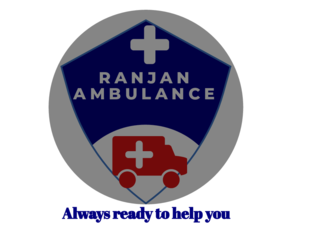
Ambulance Services in Katihar: Enhancing Emergency Healthcare Access
Katihar, a district located in the northeastern part of Bihar, India, holds significance for its agricultural production and historical landmarks. Like many rural districts in India, Katihar faces challenges in providing timely healthcare services, particularly during emergencies. This article delves into the importance, infrastructure, challenges, and impact of ambulance services in Katihar district.
Healthcare Landscape in Katihar
Katihar district, bordered by the districts of Purnia to the north, Bhagalpur to the south, and West Bengal to the east, is predominantly rural with agriculture as the primary occupation. The healthcare infrastructure includes government-run primary health centers (PHCs), community health centers (CHCs), and a district hospital, which are vital in addressing the healthcare needs of the local population. However, access to healthcare remains a challenge, especially in remote and underserved areas of the district.
Importance of Ambulance Services
Ambulance services in Katihar district play a crucial role in healthcare delivery for several reasons:
Emergency Medical Response: Ambulances provide critical emergency medical response, ensuring swift transportation of patients from the site of emergencies to healthcare facilities. This timely access to medical care significantly improves outcomes in cases of accidents, heart attacks, strokes, and other acute health emergencies.
Medical Transport Accessibility: Ambulances facilitate the transportation of patients requiring urgent medical intervention to appropriate healthcare centers. This ensures that patients receive necessary treatment promptly, thereby enhancing their chances of recovery.
Healthcare Equity: Ambulance services promote equity in healthcare access by providing emergency medical transport to residents across the district, regardless of their socioeconomic status or geographic location. This helps in reducing disparities in healthcare outcomes.
Types of Ambulance Services Available
In Katihar district, ambulance services typically include:
Basic Life Support (BLS) Ambulances: Equipped with essential medical equipment such as oxygen, first aid supplies, and basic medications, BLS ambulances are staffed with trained paramedics capable of stabilizing patients during transportation.
Advanced Life Support (ALS) Ambulances: ALS ambulances are equipped with advanced medical equipment like cardiac monitors, ventilators, and medications for intensive care. They are staffed with paramedics or emergency medical technicians (EMTs) trained to manage critical medical conditions and emergencies effectively.
Infrastructure and Operation
The infrastructure supporting ambulance services in Katihar includes:
Ambulance Fleet: Managed by government health departments and occasionally supplemented by private healthcare providers, the ambulance fleet comprises vehicles adapted for rural and semi-urban environments. These vehicles are equipped to handle various medical emergencies and ensure prompt response.
Emergency Dispatch Centers: These centers serve as communication hubs, receiving emergency calls and dispatching ambulances based on the severity and nature of the medical emergency. Coordination with local hospitals, PHCs, and CHCs ensures seamless transfer of patients for further medical treatment upon arrival.
Training and Staffing: Ambulance services in Katihar are supported by skilled paramedics, EMTs, and drivers who undergo regular training to maintain proficiency in emergency medical care and safe transportation practices.
Challenges and Solutions
Despite their critical role, ambulance services in Katihar encounter several challenges:
Geographical Constraints: Katihar’s rural terrain and lack of proper road infrastructure pose challenges for ambulance operations, especially during adverse weather conditions. Improving road connectivity and maintaining ambulance fleet readiness are essential solutions.
Awareness and Accessibility: Public awareness about how and when to access ambulance services during emergencies remains limited in some communities. Conducting community awareness campaigns and leveraging technology for emergency response education can improve accessibility.
Funding and Sustainability: Ensuring sustainable funding for ambulance services and maintaining the fleet in good operational condition are ongoing challenges. Exploring public-private partnerships and innovative funding models can address these issues and enhance service quality.
To address these challenges, initiatives include:
Infrastructure Development: Collaborative efforts between government agencies and local authorities to improve road infrastructure
